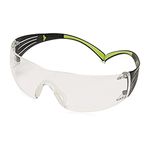Get Your Deck Off to a Good Start
Often overlooked and often regretted, the critical joint between your house and deck must hold fast and shed water.

Synopsis: Deck specialist Scott Grice sounds off on common problems that occur during deck framing. These can include bad flashing; poorly installed, corrosive, or improper bolts and screws; and ledger boards that don’t allow for proper drainage. Because the ledger board essentially supports much of the deck’s load, it is vitally important that it be installed properly and with care in order to avoid rotting, sloping, and worse.
Whether it’s used for barbecuing or for relaxing in a hot tub, the deck, by my estimation, is the best room of the house. If built the wrong way, though, this asset quickly can become a liability. More often than not, the catalyst for this transformation is a poorly detailed ledger board, usually in the form of bad flashing. Proper detailing requires two things: selecting the right hardware to attach the ledger to the house; and adequately weatherproofing the house/ledger connection.
A ledger supports and stabilizes a deck
Because it supports floor joists, the ledger carries much of the deck’s load. Its connection to the house transfers this load to the foundation while providing stability. Because the connection is usually a shear load, the fasteners must be strong and well anchored to the house.
Through bolts, such as hex or carriage bolts, are the best choice for anchoring the ledger because they won’t strip out of the wood as lag screws might. But often, due to inaccessible framing, lag screws must be used. As long as they’re installed with care, lag screws work fine. You may want to talk with the building inspector, though. The International Residential Code says, “Where positive connection to the primary building structure cannot be verified during inspection, decks shall be self-supporting.”
Regardless of which fasteners you use, be sure that they provide a suitable amount of corrosion resistance to the new arsenic-free pressure-treated wood.
Don’t let the ledger rot the walls
In Portland, Ore., we receive an average of 37 in. of rain every year; the rain here is persistent. If there’s a hole in the siding, rainwater gets into it. Once in the house, water gets to and rots the framing. Flashing, gravity, and sealants are critical to keeping out water.
Because the thought of leaks disrupts my sleep, I use backups when detailing a ledger. Sloping the deck, caulking the vulnerable joints, and flashing properly should prevent water from getting in at the ledger board. Felt paper above the ledger directs any water that has made its way behind the siding to the 2×2 flashing and out. And if water somehow does make it behind the ledger, there’s another layer of paper to protect the house and a space for that water to drain. As with any security program, redundancy is superfluous only when not needed.
Use Bolts, Flashing, And an AirSpace

Note: If you live in a cold climate, you can step the deck down to avoid water problems caused by melting snow. The International Residential Code allows up to an 8-in. step.
 |
 |
Joist span drives fastener spacing
Longer floor joists require tighter fastener spacing. Results of a test conducted by Virginia Tech professors Joe Loferski and Frank Woeste (Journal of Light Construction, June 2004) conclude that through bolts provide significantly more holding power than lag screws. But properly spaced and seated, lag screws can provide an adequate connection.

For more photos and information on how to use bolts, flashing and an airspace, click the View PDF button below.
Fine Homebuilding Recommended Products
Fine Homebuilding receives a commission for items purchased through links on this site, including Amazon Associates and other affiliate advertising programs.

Angel Guard Deck Demon

Metal Connector Nailer

Protective Eyewear

